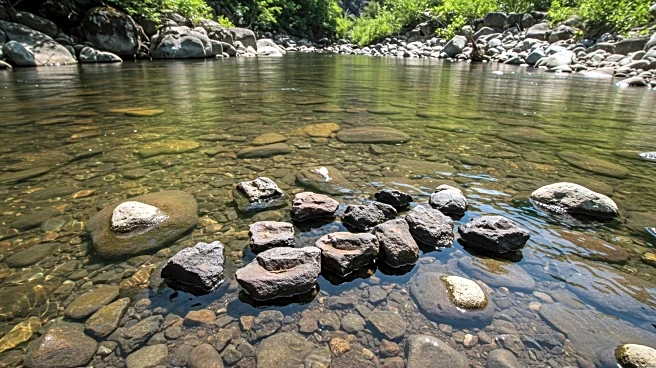What's Happening?
A local historian has made a significant archaeological discovery on the banks of the Sava River, uncovering a trove of ancient iron bars that have been buried for 2,000 years. These iron ingots, preserved by the low-oxygen mud of the river, offer new insights into the pre-Roman industry in the Balkans. The discovery challenges previous understandings of the region's industrial capabilities before Roman influence, suggesting a more advanced level of metallurgy and trade than previously thought. The iron bars were found in a well-preserved state, indicating sophisticated methods of production and storage by ancient civilizations.
Why It's Important?
This discovery is crucial for historians and archaeologists as it provides tangible evidence of advanced industrial activities in the Balkans prior to Roman occupation. It suggests that the region had developed significant metallurgical skills and trade networks, which could reshape historical narratives about economic and technological development in ancient Europe. The find may also influence current archaeological methods and theories regarding ancient industry, prompting further exploration and study in the area. Additionally, it highlights the importance of local historians and their role in uncovering significant historical artifacts.
What's Next?
The discovery is likely to lead to more detailed archaeological investigations in the Sava River area to uncover additional artifacts and gain a deeper understanding of the pre-Roman industry. Researchers may collaborate with international experts to analyze the ingots and explore their implications for historical trade routes and economic systems. The findings could also inspire new exhibitions in museums, showcasing the technological prowess of ancient Balkan civilizations. Furthermore, this discovery may encourage funding and support for similar archaeological projects in the region.
Beyond the Headlines
The discovery of these iron ingots not only sheds light on ancient industrial practices but also raises questions about the cultural and societal structures that supported such advancements. It may prompt discussions on the environmental impact of ancient metallurgy and the sustainability of resource extraction practices. Additionally, the find could influence modern perspectives on cultural heritage preservation and the importance of protecting archaeological sites from environmental and human threats.

